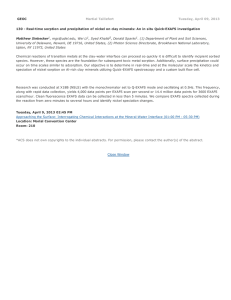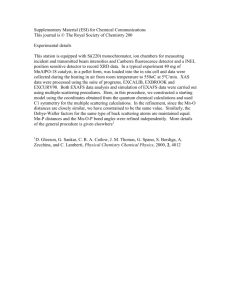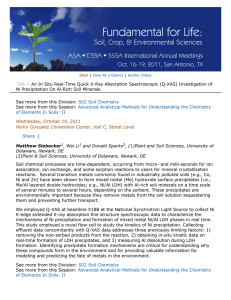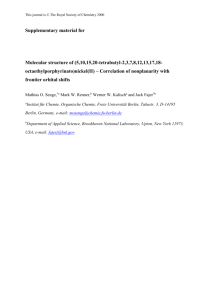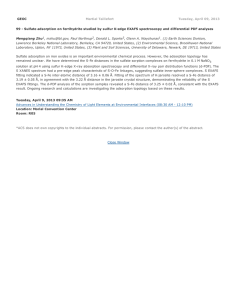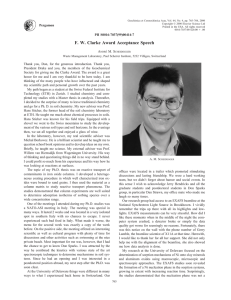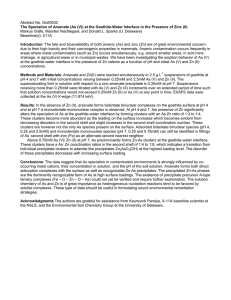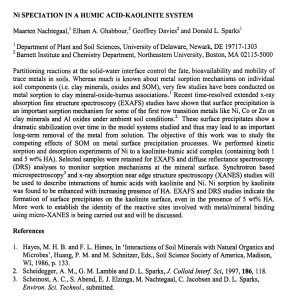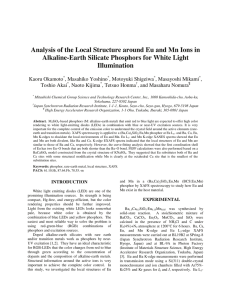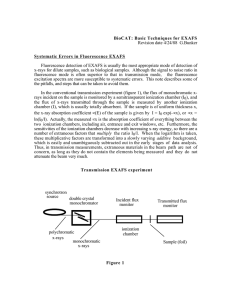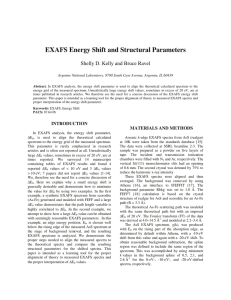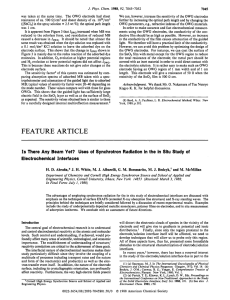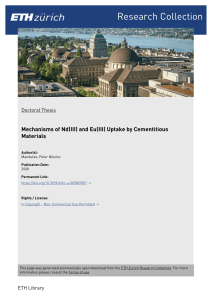13113 Start Kinetics of NiAl Layer Double Hydroxide Precipitate Formation On Aluminum Oxide: A TimeResolved XRD and QuickScanning EXAFS Study.
advertisement
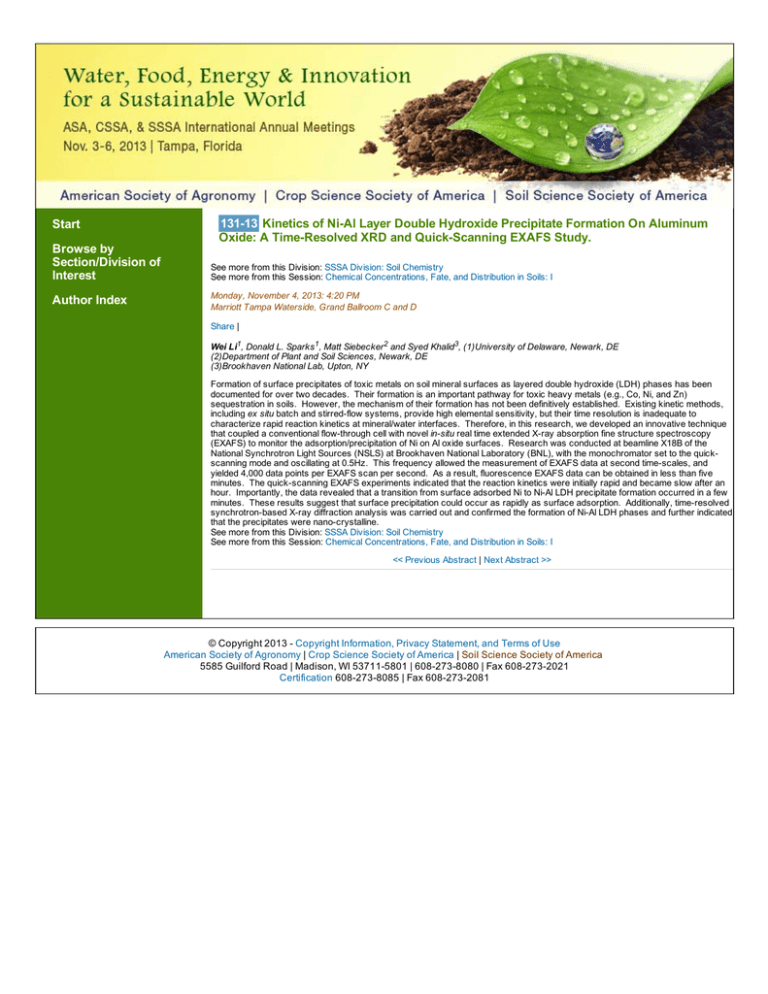
Start Browse by Section/Division of Interest Author Index 131­13 Kinetics of Ni­Al Layer Double Hydroxide Precipitate Formation On Aluminum Oxide: A Time­Resolved XRD and Quick­Scanning EXAFS Study. See more from this Division: SSSA Division: Soil Chemistry See more from this Session: Chemical Concentrations, Fate, and Distribution in Soils: I Monday, November 4, 2013: 4:20 PM Marriott Tampa Waterside, Grand Ballroom C and D Share | Wei Li1, Donald L. Sparks 1, Matt Siebecker 2 and Syed Khalid3, (1)University of Delaware, Newark, DE (2)Department of Plant and Soil Sciences, Newark, DE (3)Brookhaven National Lab, Upton, NY Formation of surface precipitates of toxic metals on soil mineral surfaces as layered double hydroxide (LDH) phases has been documented for over two decades. Their formation is an important pathway for toxic heavy metals (e.g., Co, Ni, and Zn) sequestration in soils. However, the mechanism of their formation has not been definitively established. Existing kinetic methods, including ex situ batch and stirred­flow systems, provide high elemental sensitivity, but their time resolution is inadequate to characterize rapid reaction kinetics at mineral/water interfaces. Therefore, in this research, we developed an innovative technique that coupled a conventional flow­through cell with novel in­situ real time extended X­ray absorption fine structure spectroscopy (EXAFS) to monitor the adsorption/precipitation of Ni on Al oxide surfaces. Research was conducted at beamline X18B of the National Synchrotron Light Sources (NSLS) at Brookhaven National Laboratory (BNL), with the monochromator set to the quick­ scanning mode and oscillating at 0.5Hz. This frequency allowed the measurement of EXAFS data at second time­scales, and yielded 4,000 data points per EXAFS scan per second. As a result, fluorescence EXAFS data can be obtained in less than five minutes. The quick­scanning EXAFS experiments indicated that the reaction kinetics were initially rapid and became slow after an hour. Importantly, the data revealed that a transition from surface adsorbed Ni to Ni­Al LDH precipitate formation occurred in a few minutes. These results suggest that surface precipitation could occur as rapidly as surface adsorption. Additionally, time­resolved synchrotron­based X­ray diffraction analysis was carried out and confirmed the formation of Ni­Al LDH phases and further indicated that the precipitates were nano­crystalline. See more from this Division: SSSA Division: Soil Chemistry See more from this Session: Chemical Concentrations, Fate, and Distribution in Soils: I << Previous Abstract | Next Abstract >> © Copyright 2013 ­ Copyright Information, Privacy Statement, and Terms of Use American Society of Agronomy | Crop Science Society of America | Soil Science Society of America 5585 Guilford Road | Madison, WI 53711­5801 | 608­273­8080 | Fax 608­273­2021 Certification 608­273­8085 | Fax 608­273­2081
